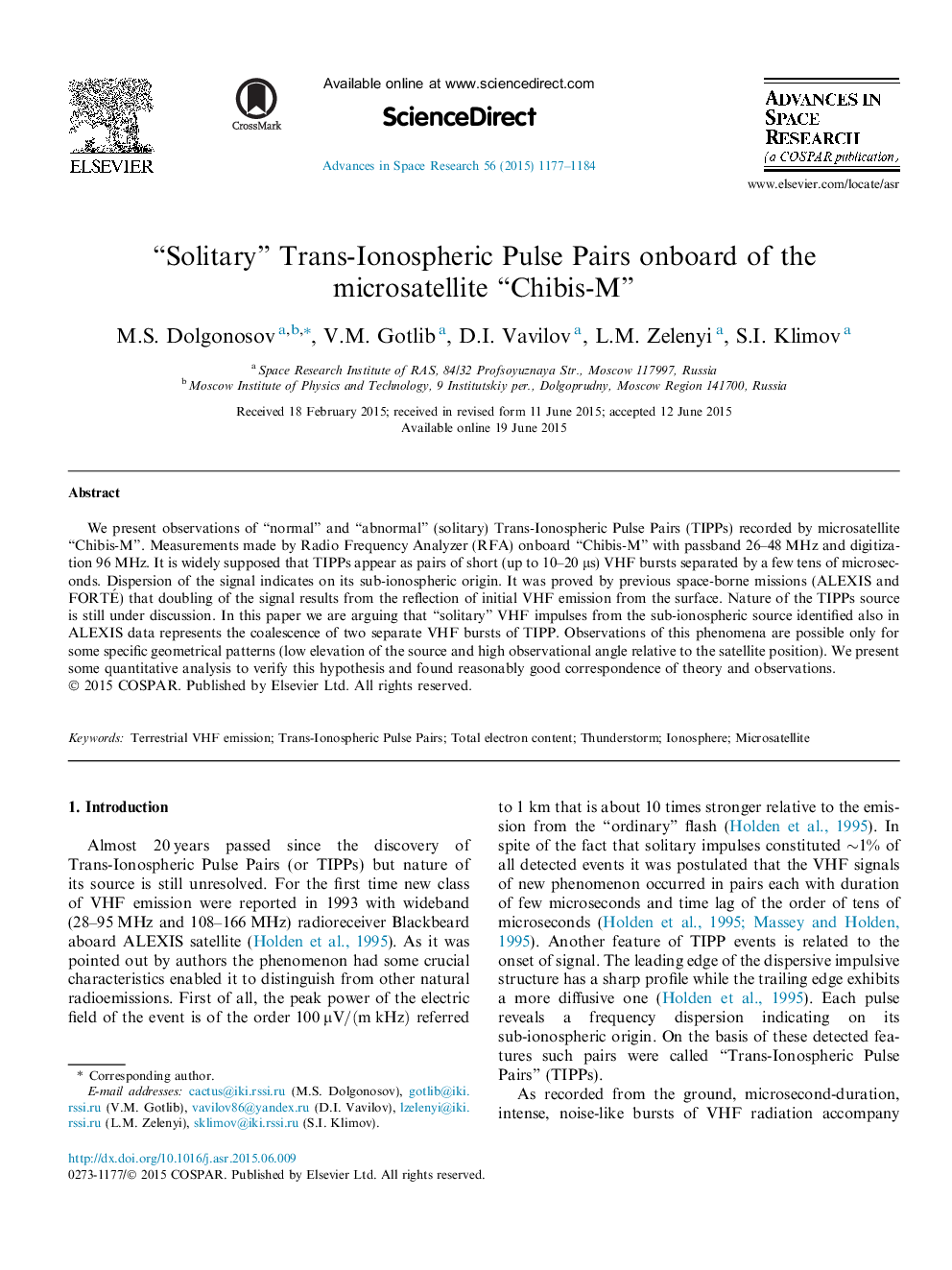| Article ID | Journal | Published Year | Pages | File Type |
|---|---|---|---|---|
| 10694212 | Advances in Space Research | 2015 | 8 Pages |
Abstract
We present observations of “normal” and “abnormal” (solitary) Trans-Ionospheric Pulse Pairs (TIPPs) recorded by microsatellite “Chibis-M”. Measurements made by Radio Frequency Analyzer (RFA) onboard “Chibis-M” with passband 26-48 MHz and digitization 96 MHz. It is widely supposed that TIPPs appear as pairs of short (up to 10-20 μs) VHF bursts separated by a few tens of microseconds. Dispersion of the signal indicates on its sub-ionospheric origin. It was proved by previous space-borne missions (ALEXIS and FORTÃ) that doubling of the signal results from the reflection of initial VHF emission from the surface. Nature of the TIPPs source is still under discussion. In this paper we are arguing that “solitary” VHF impulses from the sub-ionospheric source identified also in ALEXIS data represents the coalescence of two separate VHF bursts of TIPP. Observations of this phenomena are possible only for some specific geometrical patterns (low elevation of the source and high observational angle relative to the satellite position). We present some quantitative analysis to verify this hypothesis and found reasonably good correspondence of theory and observations.
Related Topics
Physical Sciences and Engineering
Earth and Planetary Sciences
Space and Planetary Science
Authors
M.S. Dolgonosov, V.M. Gotlib, D.I. Vavilov, L.M. Zelenyi, S.I. Klimov,
